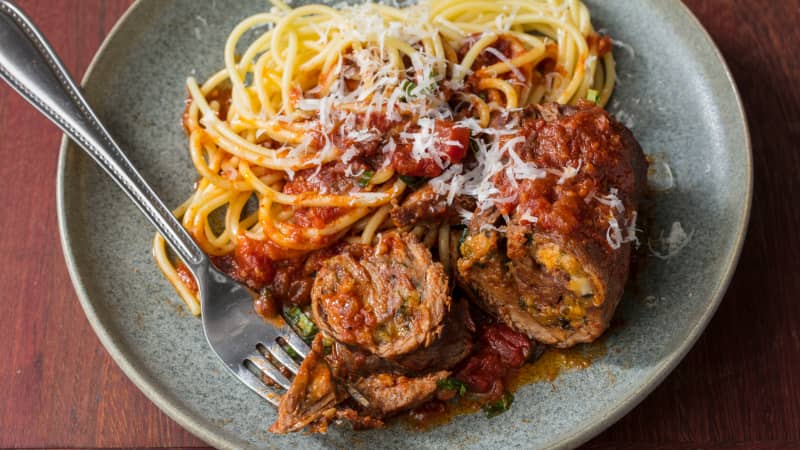My nonna is no longer with us, but if I close my eyes, I can still hear the thwack‑thwack of her meat mallet as she pounded pieces of beef thin for her weekly batch of braciole. She rolled the meat around a simple bread crumb, cheese, and herb filling; pinned the parcels with toothpicks; seared them; and slowly simmered them in a rich tomato sauce. The braciole was often just one element of her Sunday gravy, which could also include savory meatballs and rich sausages to serve at a family gathering with guests numbering in the teens. But the meaty bundles were always what really captivated me, and I figured it was time I learned to make them myself.
First, an acknowledgement that “braciole” means different things to different people: In much of mainland Italy, including Piedmont, where my nonna grew up, it refers to the dish I just described, prepared with beef, pork, or veal and assembled into either one large roll to be sliced into pinwheels for serving or smaller individual ones, like my nonna preferred. However, in the far north of the country, along the Austrian border, “braciole” refers to a grilled bone-in pork or veal chop. In the deep Sicilian south, it’s the name for tiny skewered and grilled stuffed beef rolls. Calabrian braciole features pounded pork shoulder and is spicy with the region’s chiles, whereas Neapolitan versions are typically made with beef and stuffed with pine nuts, raisins, cured meat, and/or hard-cooked eggs.









